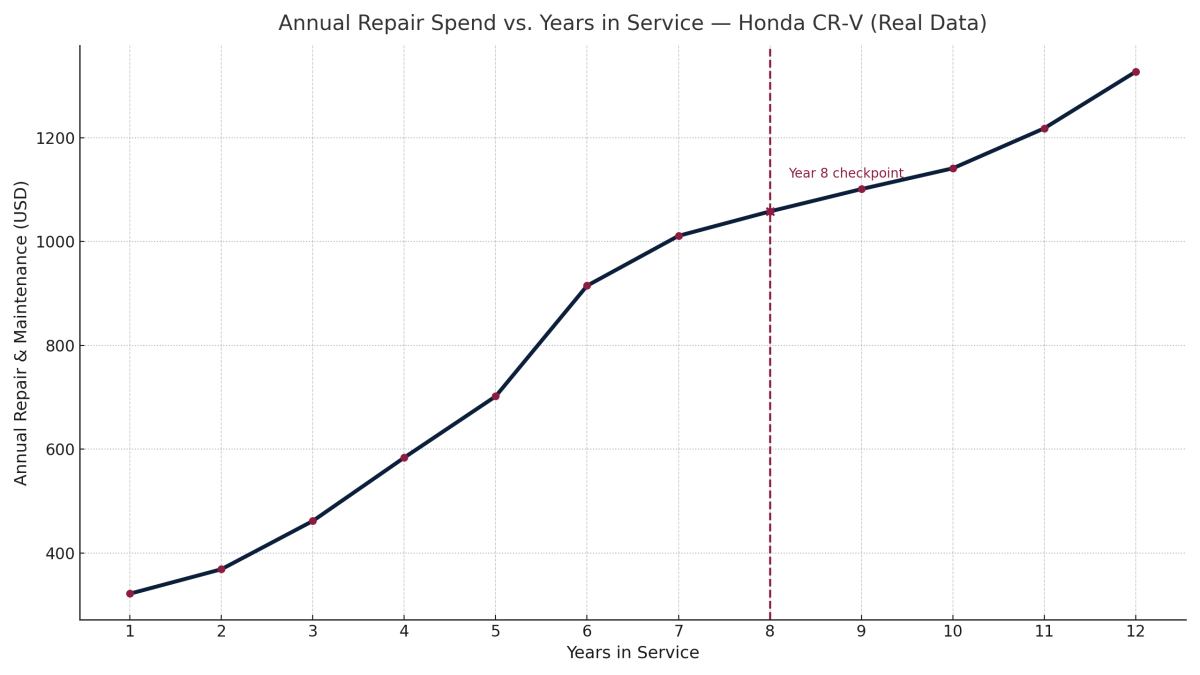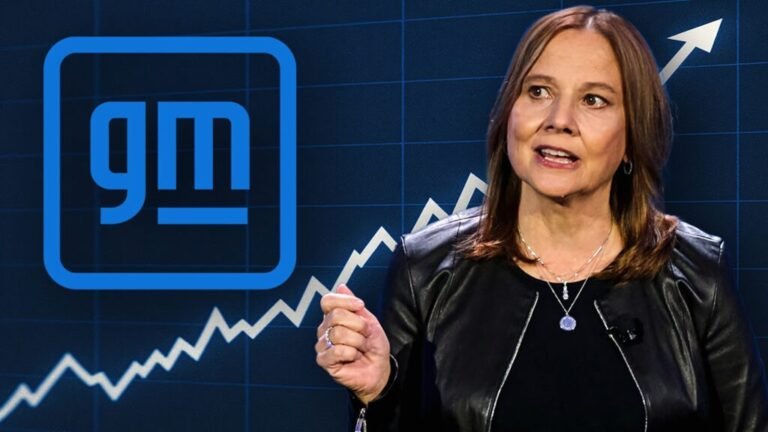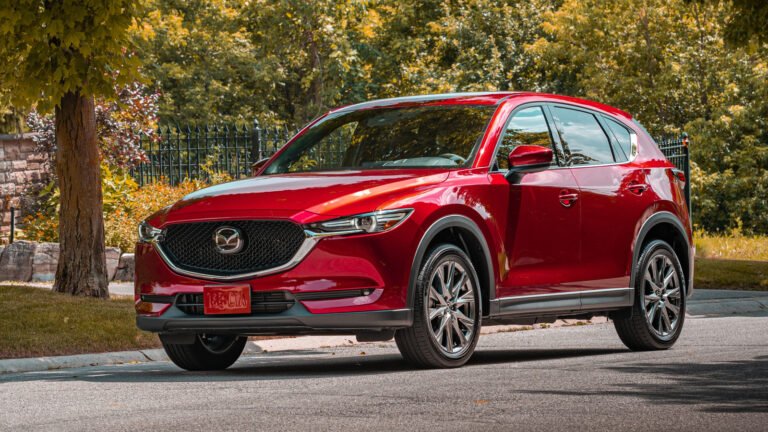Trade-ins hit 7.6 years on average in Q1 2025, the oldest since 2019. At the same time, the average vehicle age on U.S. roads is 12.8 years. That gap says plenty: people keep cars longer, but when they do trade, they’re arriving later in the life cycle. If you’re searching “should I keep my old car” or “when to replace car,” the answer lives where your repair bills meet depreciation.
Depreciation: The Payment You Never See
Depreciation is the invisible payment. Mainstream valuation sources peg first-year depreciation around 16%–20%; on a $40,000 new car, that’s about $8,000 gone in year one. You never write the check, but it still leaves your wallet. Stack that against your current car’s costs before you surrender a reliable ride for the smell of new plastics.
When Repair Bills Start to Climb

Check the chart; you can see it clearly. Annual repair costs climb slowly through year five, give a kick, settle until year seven, then start to climb more steeply each year. If your bills pass about $3,000/year beyond year eight, you’re entering trade-now territory.
Owner-reported data shows maintenance and repairs escalate as vehicles age, especially after the warranty years. That doesn’t mean an automatic sell signal. It means budget for big items on older cars and compare them honestly to a new payment plus depreciation. If your shop estimates $2,000 a year for the next three years, that’s still often less than the first-year value loss on a replacement.

The $3,000-Per-Year Threshold
Use the 7.6-year mark as a checkpoint. If you are past 150,000 miles and repairs top $3,000 per year, trade now and lock in predictable costs. If you’re under $3,000 per year, keep the car and shoot for 10–12 years of ownership. That’s where the math usually favors you. Also watch negative equity: rolling thousands from an old loan into a new one buries the break-even; if you’re underwater, the cheapest plan is to drive out of the hole.
How to Run the Numbers Yourself
Add up the last 12 months of repairs (skip normal wear like tires and oil). Ask your mechanic for a three-year forecast of likely failures with rough pricing. Price your replacement and note both the monthly payment and the first-year depreciation hit. Compare those totals across three years. If your current car’s projected repairs are lower, keep it. If they’re higher and the odometer and age say you’re late in the curve, move on.
My Verdict
Most Americans trade too early. Break that rule only when annual repairs exceed $3,000 and you’re past 150,000 miles, or when a known failure looms. That inflection point is likely between 7 and 8 years. Replace on math, not impulse.


